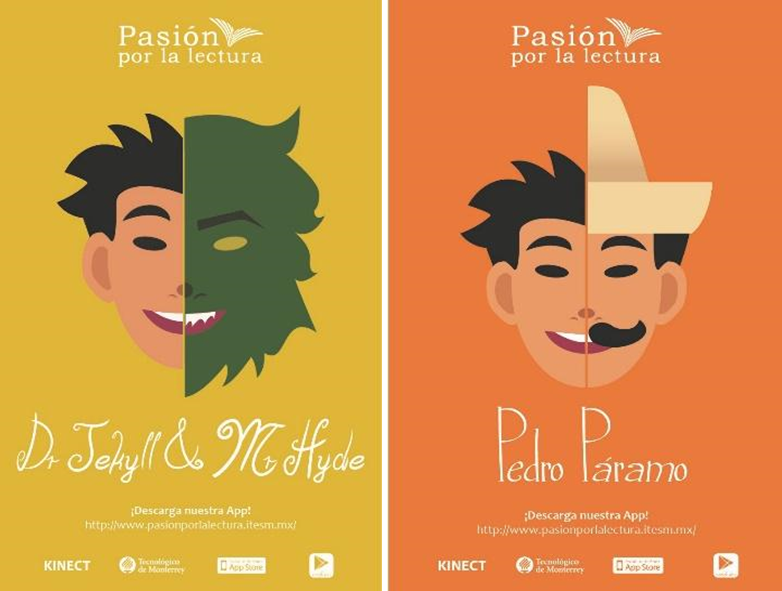An individual’s reading competency is fundamental for the development of his or her learning process. As part of the program “Pasión por la lectura” (Passion for Reading), Tecnológico de Monterrey students developed two technological solutions that use virtual reality, augmented reality, and gamification elements to foster reading.
Image: Pasión por la lectura / Tecnológico de Monterrey
By Pablo Guillermo Ramírez
pramirez@itesm.mx
An individual’s reading competency is fundamental for the development of his or her learning process. From the cognitive perspective, reading comprehension allows people to develop their information processing, dimensioning and assessment capacities, distinguish the fundamental from secondary aspects, and store this information in their memory to recall it subsequently in the form of prior knowledge because it meant something to the person (Vallés, 2015).
However, statistics from institutions such as CONACULTA (Mexican National Culture and Arts Council) and INEGI (Mexican National Institute of Statistics and Geography) (De la Torre, 2014) related to reading habits in our country, are discouraging and reflect a clear need to promote their development. With this purpose in mind, Tecnológico de Monterrey created the program “Pasión por la lectura” (Passion for Reading), which seeks to promote and develop this habit in students. This program has been promoted in the academic community through traditional media, so we set ourselves the challenge of using new technologies to foster and motivate student participation.
data-animation-override>
“Students developed two technological solutions that use virtual reality, augmented reality and gamification elements to foster reading.”
With this objective, in 2016 students from the course Virtual Environments developed two interactive applications that use virtual reality, augmented reality and elements of gamification. They formed work groups for different activities according to the students’ interest and profile. For example, to generate the script, graphic design and illustration, 3D modeling, programming and sound editing.
One of the main purposes of this course is to involve students in projects that offer solutions to the problems existing in our environment, using knowledge acquired on this subject. Therefore, we need to look to and foster linking the courses we teach to the needs of our environment.
For the pilot program, five books were selected from a list of 100:
1. “Dracula” by Bram Stoker (1897).
2. “Pedro Páramo” by Juan Rulfo (1955).
3. “Perfume” by Patrick Süskind (1985).
4. “Dr. Jekyll and Mr. Hyde” by Robert Louis Stevenson (1886).
5. “Metamorphosis” by Franz Kafka (1915).
The first application implemented was an interactive kiosk used mainly to attract new readers. Kinect was used to detect people to “wear accessories” from the different scenes of the books and inform about the Passion for Reading program.
The second application developed has “object recognition” functions, a characteristic used through mobile devices to invite people to locate the posters for the Passion for Reading program, which were designed and developed on the basis of the book titles. They function as markers and have to be located by placing the mobile app in “hunt” mode to recognize them. Students then answer a reading verification quiz to earn points and, in the future, exchange them for benefits such as discounts in book stores or cafeterias. The application is under development and will be published in mobile device stores (Android, iOS).
Since the project has been developed for a specific course, it undoubtedly has many areas of opportunity and many functionalities that have been limited owing to deadlines and academic objectives that have to be met. The project is open to anyone who wishes to participate in the development, creative and administrative areas. If you are interested in taking part in this project, please contact us to discuss your collaboration.
The project is still being developed and we would like to increase the number of participating books, as well as the functionality of the applications. At the same time, we hope to raise the funds needed for its installation in public spaces where students normally gather, such as cafeterias and libraries, to foster reading in the community in general.
About the author
Pablo Guillermo Ramírez Flores is a professor from the Department of Electrical and Computer Engineering, Campus Monterrey. He also collaborates with the Computer Science and Art Departments. His areas of interest are related to the use of electronic technologies in virtual environments, such as virtual reality, augmented reality and mixed reality to develop projects with an educational impact.
This article from Observatory of the Institute for the Future of Education may be shared under the terms of the license CC BY-NC-SA 4.0 
)
)


)